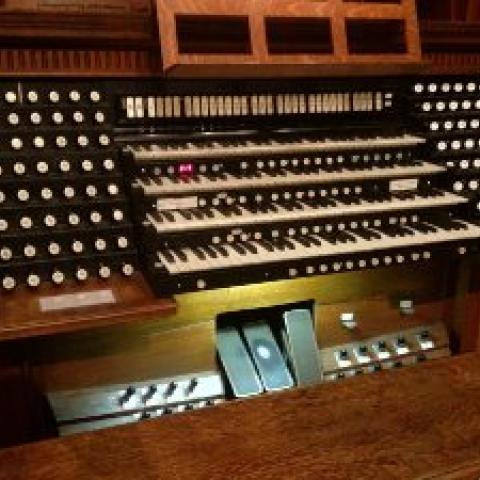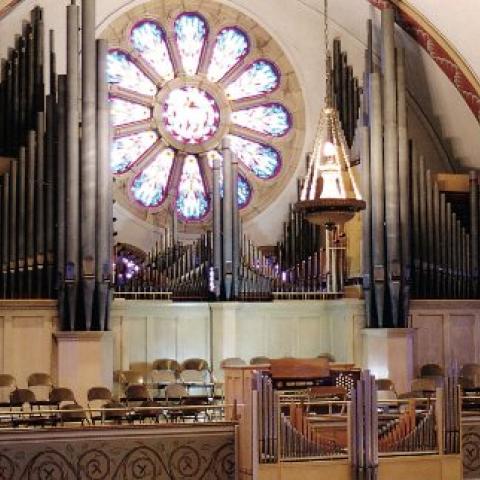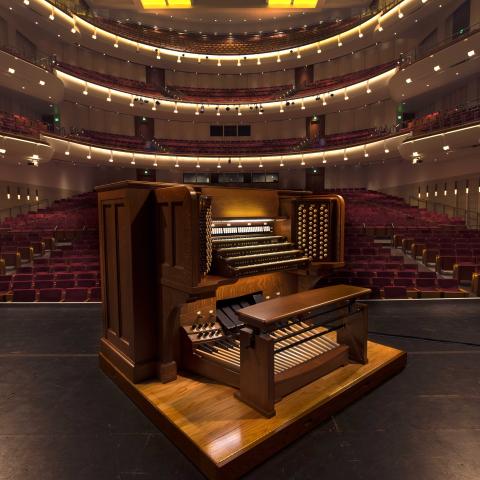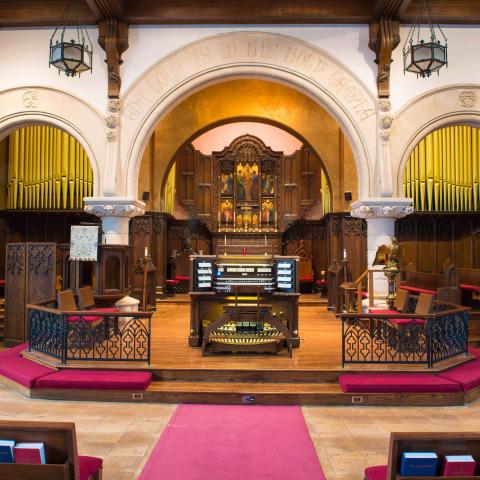
St. Mark’s Episcopal Church, Philadelphia, Pennsylvania, recently undertook a restoration of its historic pipe organ. Aeolian-Skinner Opus 948 (1936–1937) was designed and voiced by G. Donald Harrison, president and tonal director of Aeolian-Skinner. The instrument includes two older divisions in the chancel—the Screen division that dates from about 1906 and the String division, built in 1922 at the Wanamaker organ shop. An Antiphonal organ was added to the instrument in 2002 and included ranks of pipes as well as digital stops.
In the recent project, the Antiphonal organ was revised by eliminating digital voices and adjusting the tonal quality of the pipework to achieve a better blend with the chancel organ. Ranks of pipes were acquired from dismantled Aeolian-Skinner organs (Saint Thomas Church, Fifth Avenue, and Saint Paul’s School, Concord, New Hampshire), both designed and voiced by G. Donald Harrison, to create a complete chorus. A Flauto Mirabilis stop by E. M. Skinner was moved from the Antiphonal organ to the chancel organ.
Emery Brothers of Allentown, Pennsylvania, took on the restoration of the chancel organ. The process of reinstallation was managed by long-time curator Steve Emery. Repairs and revisions of the Antiphonal organ were carried out by Foley-Baker Inc., of Tolland, Connecticut. The resulting instrument comprises 114 ranks of pipes.
For information: www.saintmarksphiladelphia.org.







